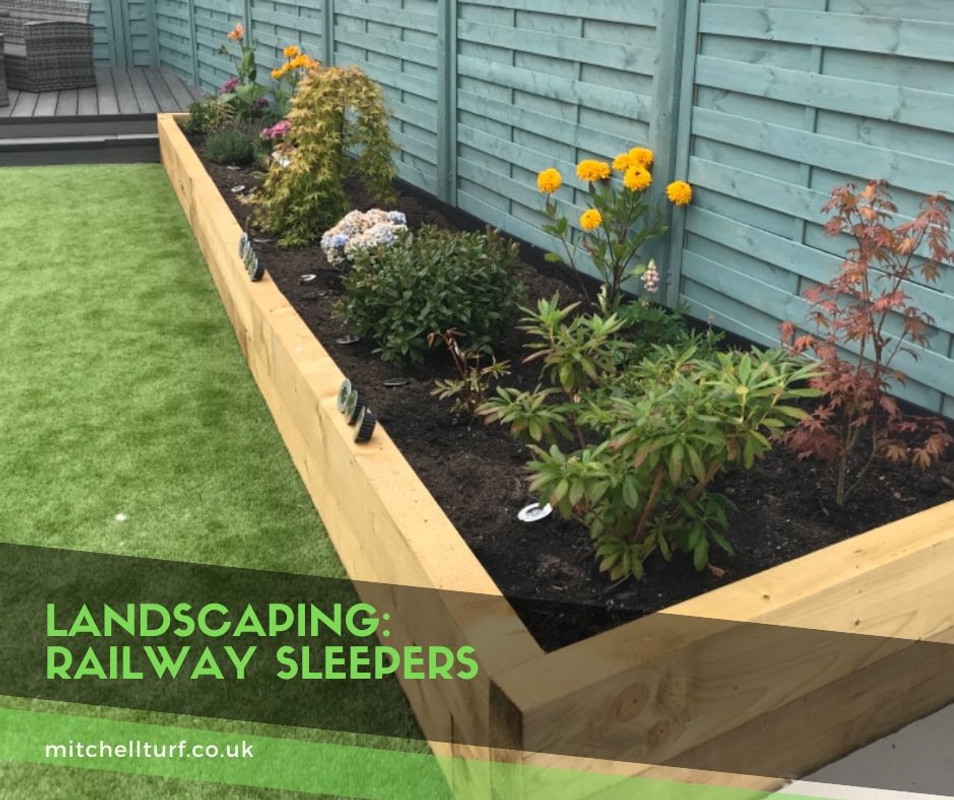Garden Landscaping With Railway Sleepers
Railway Sleepers, also known as garden sleepers or wooden sleepers, have gained a lot of popularity in recent years and have become frequently used in various garden landscaping projects. Railway sleepers are long pieces of heavy timber that were originally designed to be laid horizontally under railroad tracks. Due to the distinctive shape and trendy structure of wood sleepers, it has made them perfect for many landscaping projects.
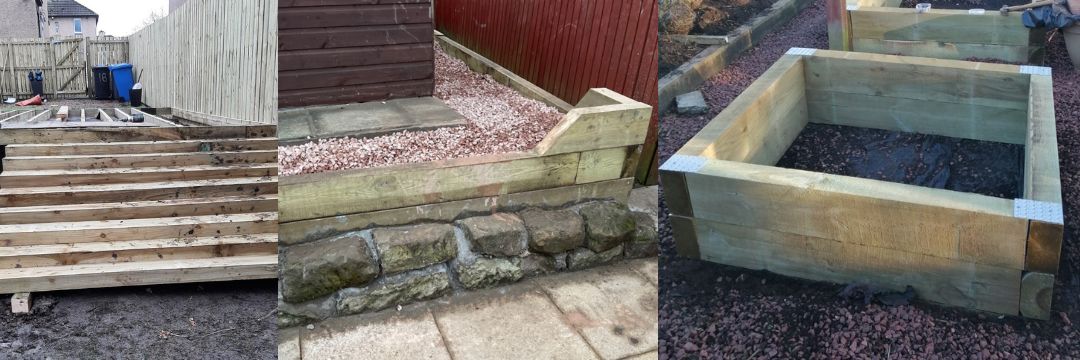
Creative Uses for Railway Sleepers in Garden Landscaping
Railway sleepers are an versatile and cost-effective way to makeover your garden and can be used in a variety of creative ways:
- Raised garden beds: Railway Sleepers are often used to create raised garden beds. Stacking the sleepers on top of each other and then filling them with soil. Plants can be grown in a contained space that provides better drainage and improved soil quality. The height of the bed also makes it easier to access for planting, watering and harvesting.
- Garden edging sleepers: Create edging for your lawn or pathway, or use railway sleepers as borders to divide your garden into different 'rooms'.
- Composting area: Create a composting area by stacking them for a contained space to compost materials. The raised height helps to contain material and prevents spreading to other areas.
- Railway Sleepers as Steps: Laying sleepers as steps to add an interesting visual element and a practical way to navigate the outdoor garden space.
- Fence or alternative to a low brick garden wall: Railways sleepers as a retaining wall to create a rustic and natural barrier to hold back soil and prevent erosion.
- Terraces to make a steep garden useable: Create a functional and attractive garden by constructing terraces to transform a steep garden.
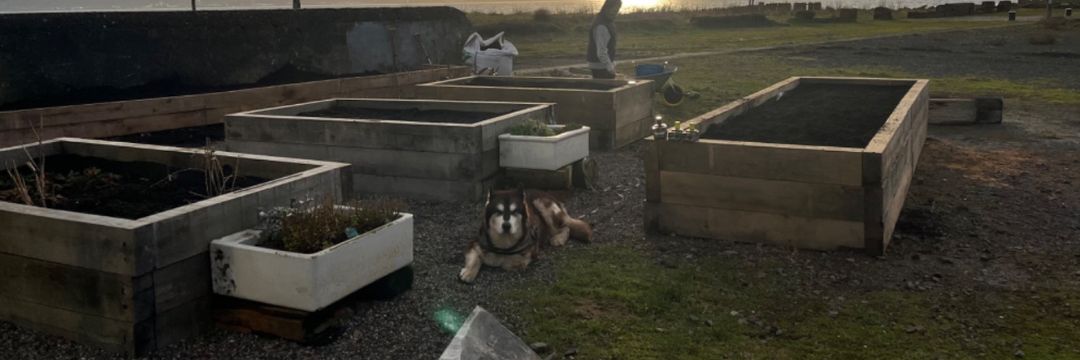
Sizes and Dimensions of Railway Sleepers
The most common size of railway sleepers in the UK are 2.4m x 200mm x 100mm. Crosscut timber sleepers are becoming increasingly popular due to the ease of handling and transporting in smaller vehicles, so you will mostly see a stock of 1.2m and 2.4m sleepers. Depending on the project you may want to resize the sleeper. Cutting sleepers to a bespoke size can be done with a circular saw, hand saw or chainsaw. It’s recommended to use a blade designed for cutting timber and wearing the appropriate safety gear including: gloves, eye protection and a mask to avoid inhaling dust.
Dimensions of our Railway Sleepers:
- 1.2m sleepers / 4ft = 1200mm x 200mm x 100mm
- 2.4m sleepers / 8ft = 2400mm x 200mm x 100mm
- 2.4m sleepers / 8ft = 2400mm x 250mm x 125mm
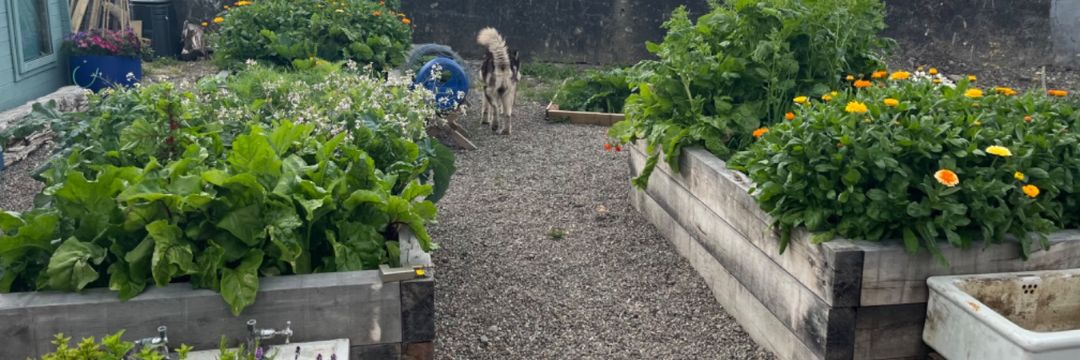
Are Railway Sleepers Good for Vegetable Gardens?
Railway sleepers can be an excellent option for vegetable garden beds. They provide a sturdy and durable structure that can hold the soil in place, preventing soil erosion and waterlogging. Railway sleepers can also create a neat and tidy edge for your vegetable garden, making it look more organised and visually appealing. When installed above the ground, Railway Sleepers become an effective raised bed for vegetables and flowers as it helps ward off weeds and pests. They are a cheap alternative to brick or stone.
Can You Lay Railway Sleepers on Soil?
Railway sleepers can be laid on soil, but it's important to prepare the ground properly before installation. First, remove any debris and level the soil to create a flat surface. You’re best removing any grass or weeds then adding a base layer of gravel or sand to help with drainage. This will also help prevent wood rot. Place weed control fabric to prevent the weeds from growing between the railway sleepers. Finally, place the railway sleepers on top of the weed barrier and use stakes to secure them in place. Keep in mind that railway sleepers are heavy and can splinter, so it's best to have a helping hand and a pair of gloves for installation.
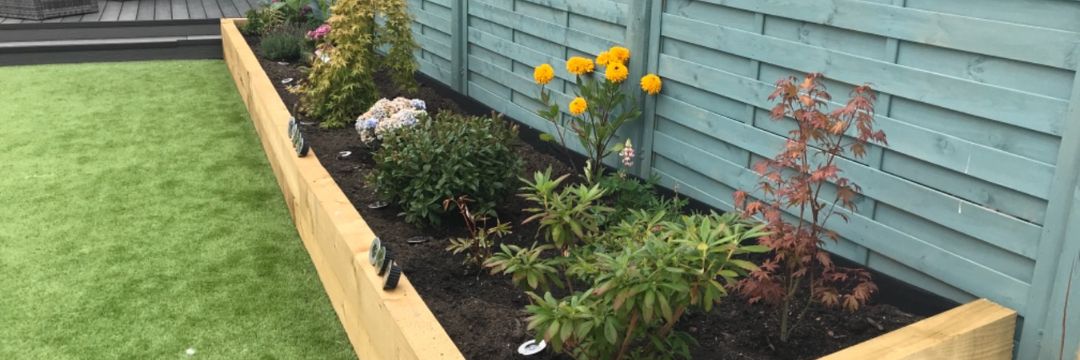
What Are Railway Sleepers Treated With?
Railway sleepers can be pressure treated with chemicals to enhance their lifespan and protect them from decay, insects, and weathering. Treated railway sleepers are pressure treated “tanalised sleepers” with environmentally friendly preservatives to make them safe to use for landscapers. Green Treated Sleepers are commonly sold in the UK, as the name suggests you will probably see a very slight green tint on the timber. This will disappear over time as the wood fully absorbs the treatment. Although less popular, Brown Treated Sleepers can also be found as they provide a different aesthetic. If you choose to use treated sleepers in your garden, make sure to handle them with care and wear protective gloves.
How long do railway sleepers last?
The average lifespan of a new railway sleeper is around 7 to 10 years. High levels of humidity can shorten the lifespan of softwood sleepers considerably, unless care is taken to apply paints, stains or oils as a sealant/preservative to give them added protection.
Railway sleepers can be an excellent choice for your garden projects including: vegetable garden beds, retaining walls, and walkways. They are sturdy, durable, and affordable, making them a popular choice among gardeners and landscapers. With proper installation and maintenance, garden railway sleepers can last for many years and add a unique new look to your revamped garden.
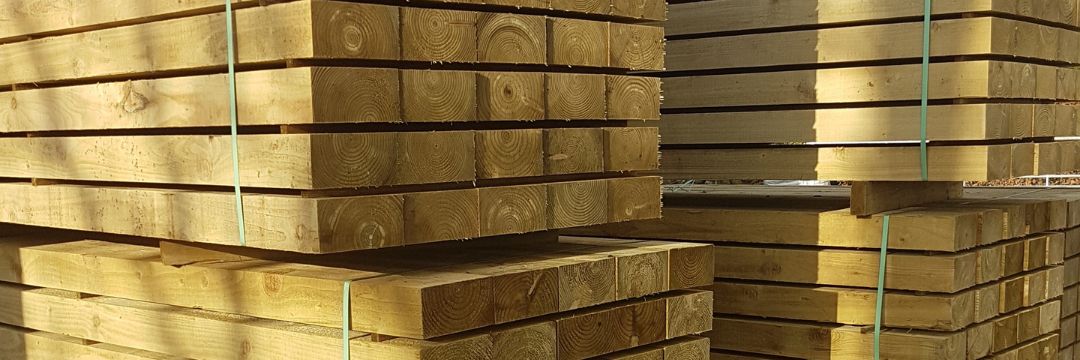
Railway Sleepers For Sale Glasgow / Edinburgh / Central Scotland
Whether you're a homeowner looking to do some DIY or a professional landscaper in need of a reliable supplier. Mitchell Turf stocks a variety of landscaping sleepers. You can buy railway sleepers conveniently online using the links provided below. If you need more information, or have any questions about the railway sleepers we have available, please contact our sales team. As your highly rated local supplier of landscaping materials, we’d be more than happy to help you decide what best fits your project.
Contact Us for Garden Railway Sleepers
- Telephone: 01236 452269
- Email: sales@mitchellturf.co.uk
